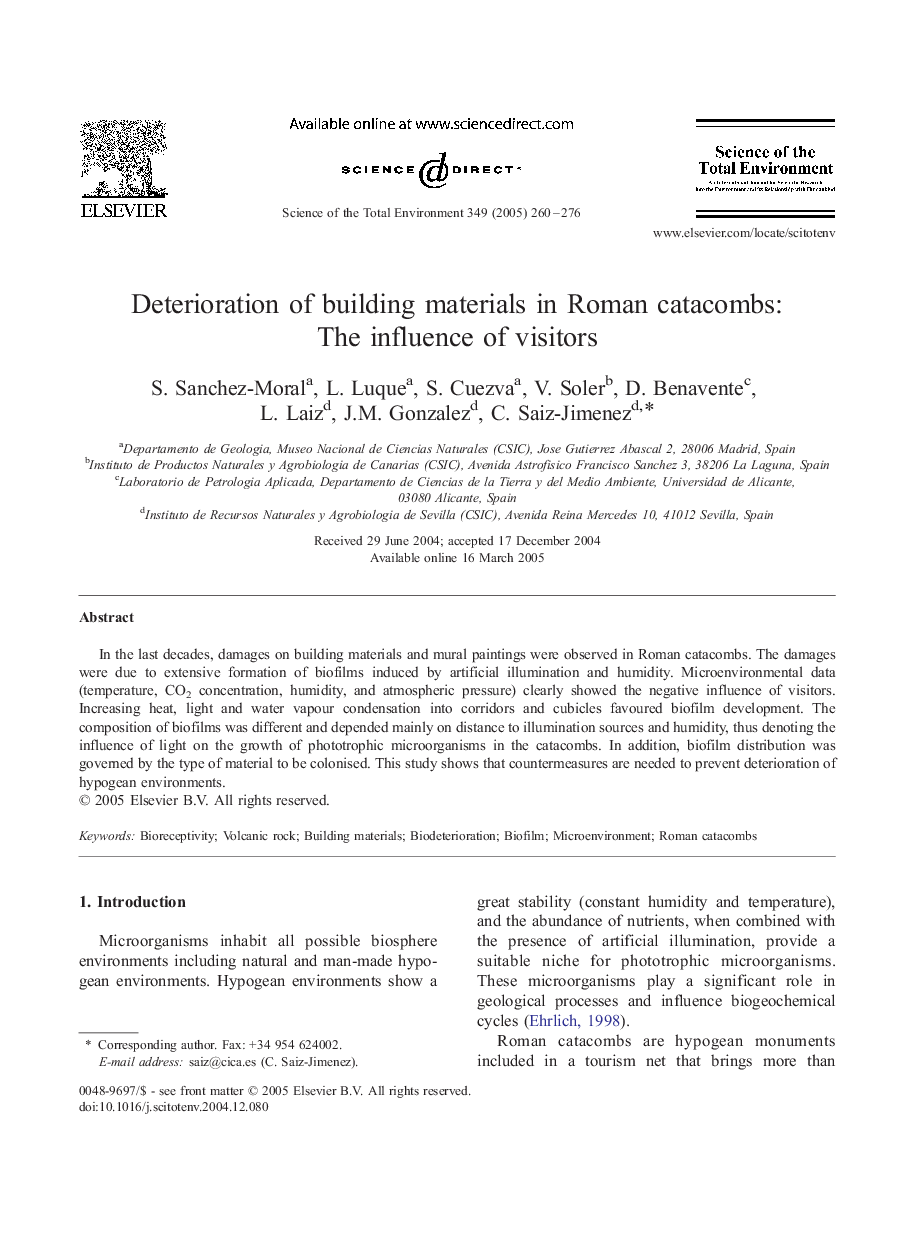| Article ID | Journal | Published Year | Pages | File Type |
|---|---|---|---|---|
| 10110629 | Science of The Total Environment | 2005 | 17 Pages |
Abstract
In the last decades, damages on building materials and mural paintings were observed in Roman catacombs. The damages were due to extensive formation of biofilms induced by artificial illumination and humidity. Microenvironmental data (temperature, CO2 concentration, humidity, and atmospheric pressure) clearly showed the negative influence of visitors. Increasing heat, light and water vapour condensation into corridors and cubicles favoured biofilm development. The composition of biofilms was different and depended mainly on distance to illumination sources and humidity, thus denoting the influence of light on the growth of phototrophic microorganisms in the catacombs. In addition, biofilm distribution was governed by the type of material to be colonised. This study shows that countermeasures are needed to prevent deterioration of hypogean environments.
Related Topics
Life Sciences
Environmental Science
Environmental Chemistry
Authors
S. Sanchez-Moral, L. Luque, S. Cuezva, V. Soler, D. Benavente, L. Laiz, J.M. Gonzalez, C. Saiz-Jimenez,
